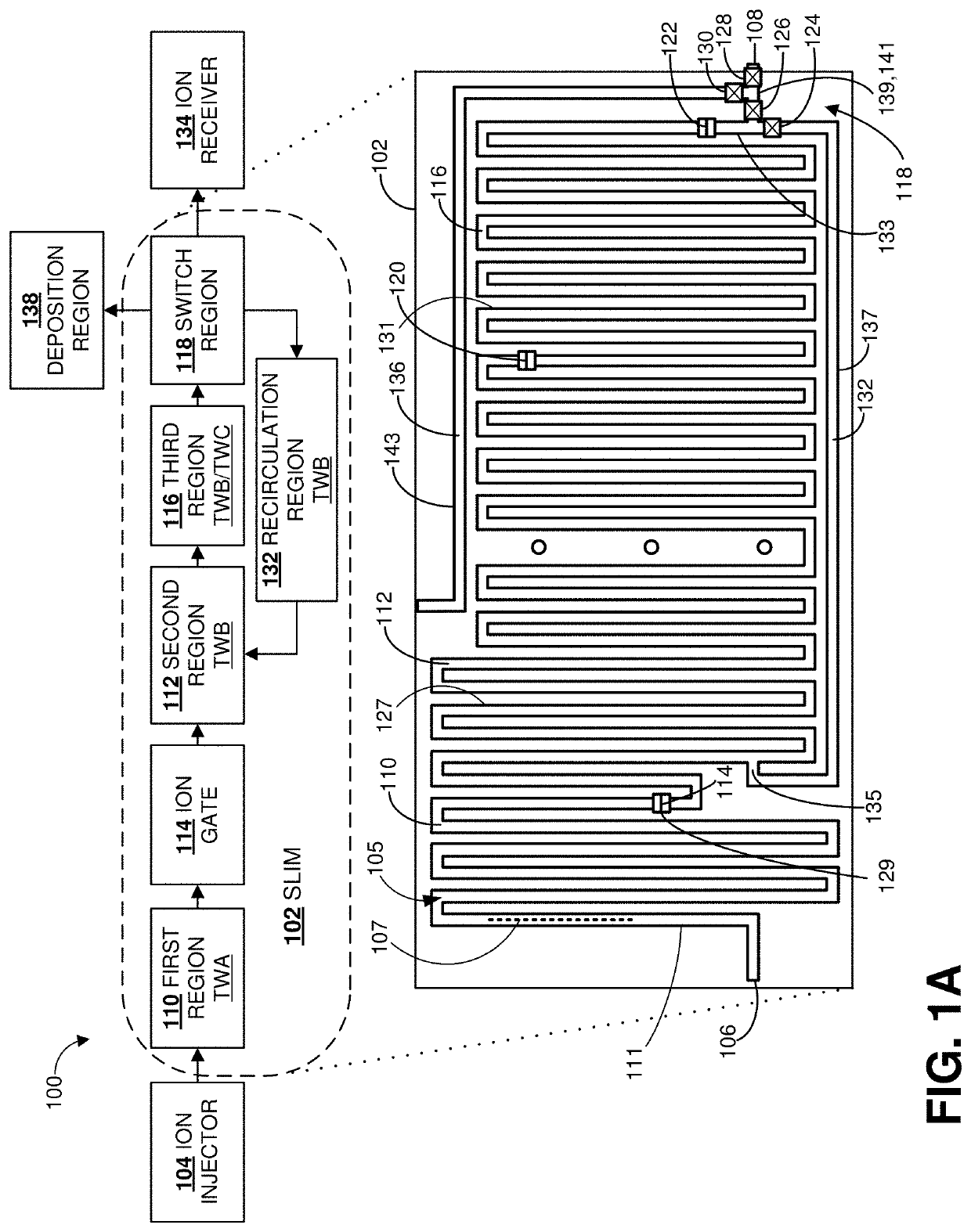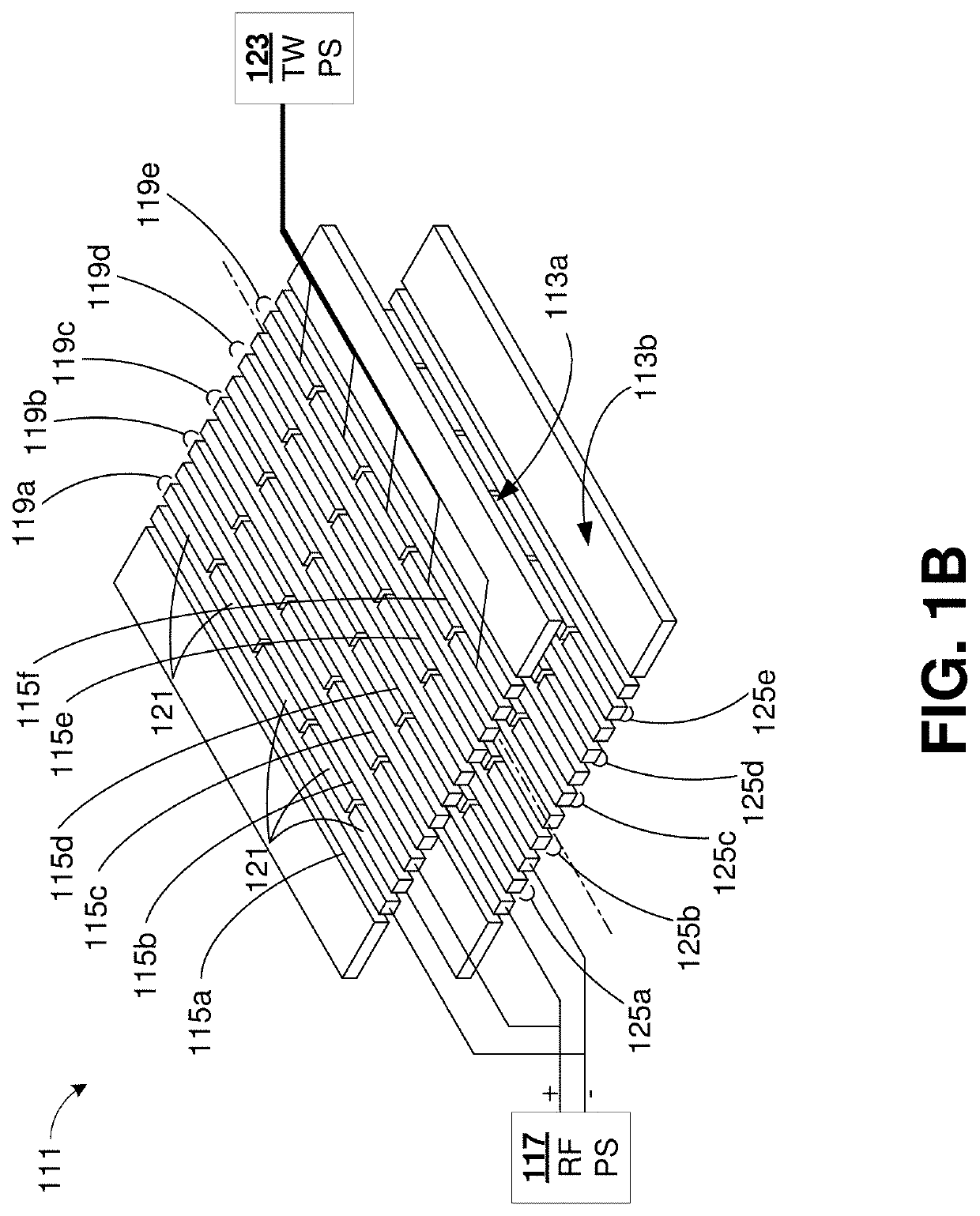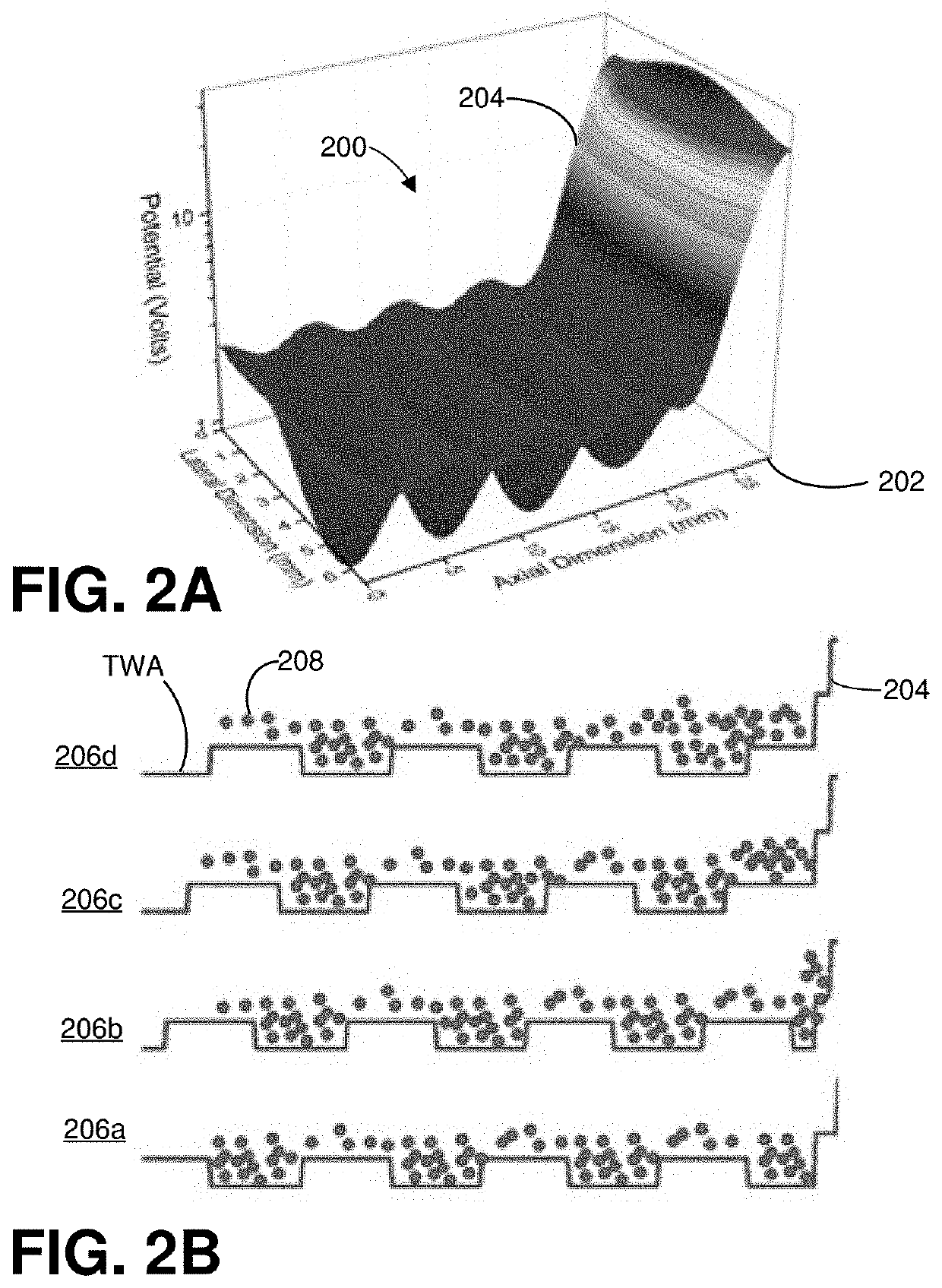Systems and methods for selective molecular ion deposition
a selective molecular ion and molecular ion technology, applied in the field of ion manipulation, can solve the problems of low ion utilization efficiency and sample loss, inefficient ion utilization, and limited resolution achieved by dtims
- Summary
- Abstract
- Description
- Claims
- Application Information
AI Technical Summary
Benefits of technology
Problems solved by technology
Method used
Image
Examples
— example 1
Concurrent Separation and Accumulation—Example 1
[0094]FIGS. 6A-6F are a time series of diagrams illustrative of a representative method 600 for concurrent ion separation and accumulation using a SLIM 602 of the disclosed technology. FIG. 6A shows the SLIM 602 at a time t0 immediately before injection of an accumulated ion set 604 and the beginning of a separation window. At time to, the ion set 604 is confined within a confinement volume of an accumulation region 606 of the SLIM 602 between an ion entrance 614 and an ion gate 608. The ion set 604 can include ions from one or more ion pulses received from an ion gate 610, such as a Bradbury-Nielson grid gate, situated upstream from the ion entrance 614. The ion gate 610 at time t0 is in a closed state such that the flow of ions into the SLIM 602 is stopped.
[0095]The ion gate 608 is situated at an interface between the accumulation region 606 and a separation region 612. The ion gate 608 is configured to produce a DC voltage to confin...
— example 2
Concurrent Separation and Accumulation—Example 2
[0104]FIG. 7 is a method 700 of concurrently separating and accumulating ions using a SLIM. At 702, the method 700 includes separating a first set of ions in a separation region of an ion manipulation apparatus while accumulating a second set of ions in an accumulation region of the ion manipulation apparatus. The first set of ions being separated within the separation region at 702, can be ions earlier received from the accumulation region through an ion gate of the ion manipulation device. The ion gate is situated at an interface of the separation region and the accumulation region where the two regions are coupled and configured to inject ions from the accumulation region to the separation region.
[0105]At 704, one or more ion packets of the first set of ions having traveled at least partially through the separation region can be selected for recirculation and reintroduced back into the separation region for further separation. Any o...
— example 3
Concurrent Separation and Accumulation—Example 3
[0107]FIG. 8 is a method 800 for concurrent ion separation and accumulation using a SLIM of the disclosed technology. The method 800 is similar to the method 700, but further includes ion peak compression. For instance, at 802, the method 800 includes separating a first set of ions in a separation region of an ion manipulation apparatus while accumulating a second set of ions in an accumulation region of the ion manipulation apparatus. An ion gate situated at an interface of the separation region and the accumulation region is configured to inject ions from the accumulation region into the separation region.
[0108]At 804, the method 800 includes compressing at least a portion of the first set of ions in a compression region of the ion manipulation apparatus while accumulating the second set of ions in the accumulation region. The compression region is coupled to the separation region at one end and a switch region of the ion manipulatio...
PUM
 Login to View More
Login to View More Abstract
Description
Claims
Application Information
 Login to View More
Login to View More - Generate Ideas
- Intellectual Property
- Life Sciences
- Materials
- Tech Scout
- Unparalleled Data Quality
- Higher Quality Content
- 60% Fewer Hallucinations
Browse by: Latest US Patents, China's latest patents, Technical Efficacy Thesaurus, Application Domain, Technology Topic, Popular Technical Reports.
© 2025 PatSnap. All rights reserved.Legal|Privacy policy|Modern Slavery Act Transparency Statement|Sitemap|About US| Contact US: help@patsnap.com



